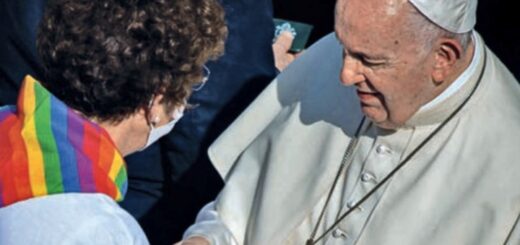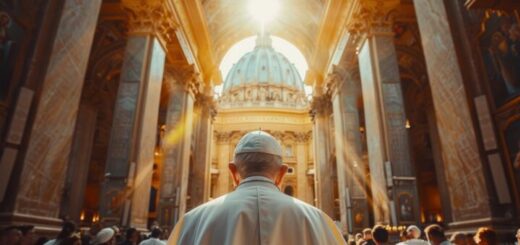Homosexuality, lived and repressed, in the Middle Ages
Text published on the platform Mosaic info (Switzerland), freely translated by Luca Canetti, part two
Globally, from the end of the Roman Empire to the thirteenth century, repression (of homosexuality) in the West is present, but is implemented in an absolutely unequal way (1). Furthermore, it must be said that between the XII century, in addition to an ever increasing urbanization, the resumption of trade and the opening of universities in numerous European regions, we witness the growth and the reinvigoration of homoerotic culture.
Courteous love also exists among men, as, moreover, testifies Coeva Christian literature (Cf. Sant'Ancelmo, San Bernardo di Chiaravalle, Sant'Aelredo di Rievaulx, or the bishop Marbodo of Rennes of the Chartres school, whose poems that sing love between men boast a vast diffusion in Europe), and several popes And men of power renounce to persecute homosexual acts (Cf. Synod Lateranse of 1059 [1], Synod of London of 1102, decree of Graziano of 1140).
At the time, male prostitution was becoming a burning topicality, and the term "Ganimede", referred to the famous Greek myth that speaks of this beautiful son of the King of Trojan kidnapped by Zeus, it becomes synonymous with the current word "Gay". The term "Sodomita" It seemed to have to be relegated to the oblivion, but it will not be long to return to common use.
Absolutism and repression
From the beginning of the thirteenth century until the end of the eighteenth century there has been the impairment of absolutism, both state and religious. It follows that the theological principles also end up in secular legislative codes. With the crusades, xenophobic feelings spread to wildfire. Just like the Jews, who suffer persecutions throughout Europe (see eg. The Lateran Ecumenical Council IV, who celebrated in 1215) (2), the "sodomites" suffered criminal persecutions more or less everywhere in the continent. Proof of this is the fact that, in Spain, in 1256 Alfonso X of Castile promulga a civil code that punished with castration and stoning i "Sins against nature".
A few years later, in Orléans, a new criminal code punished with castration, penis ablation and the stake for those who were stained with the sin of sodomy (3), before Luigi IX Salisse on the throne in 1270. Often assimilated all 'Hersia, persecuted on all fronts by the Inquisition Courts and by all the secular authorities, homosexuality is seen more and more clearly as a crime against order and nature, especially under the influence of St. Thomas Aquinas (1225-1274) (4).
Theologian renowned and listened to, Tommaso encodes Christian sexual morality in hisSumma Theologiæand judges the acts between people of the same sex "Against nature", substantially irrevocable dogma that feeds ecclesiastical rhetoric still today (5).
At the beginning of the fourteenth century, Filippo il Bello began to place himself against the knights of the Order of the Templars, accusing them of heresy and sodomy, and makes them massacre. In England RE Edoardo II, who has never made a secret of his love for Gaveston, is deposited, castrated and impaled in the rectum in 1327.
The same applies to Italy, where, already from the beginning of the fifteenth century, sodomy has been severely repressed, especially in Florence, which starting from 1432 has established a special court to pursue sodomy crimes. The Dominican monk fanatic Girolamo Savonarola denounced the situation with his ferocious sermons against "The abominable vice". However, all this will not prevent artists and some dignitaries from living their homoerotic inclinations.
In medieval Switzerland the relationships between men are punished in the same way and with the same severity, just mention the condemnation of the stake for the sodomy of the knight von Hohenberg and his servant in Zurich in 1482.
(1) To deepen, see: Synod of the Laterano, in Denz. 691-69.
(2) To deepen the main theological issues addressed by this ecumenical council, see: Lateran Ecumenical Council IV, the Catholic faith, in Denz. 800-802; The heresy of Gioacchino da Fiore, in Denz. 803-808 e Relics of the saints, in Denz. 818-819.
(3) To learn more, see: Lateran Ecumenical Council IV, Simonia, in Denz. 820.
(4) To deepen, see the main pronouncements of the magisterium of the Church about the high Angelic doctor: Leo XIII, encyclical "Æterni patris", in Denz. 3135-3140; Pius XI, encyclical "Studiorum Ducem", in Denz. 3665-3667.
(5) See in fact: C. Caffarra,Living in Christ. Compendium of Christian morality, Cantagalli, Siena 2006, 214; Education of the Congregation for Catholic Education on the criteria of vocational discernment regarding people with homosexual tendencies in view of their admission to the seminary and sacred orders "in continuity", in Denz. 5100 eCatechism of the Catholic Church, Vatican publishing library, Vatican City 1999, 2357-2359.
Original text (PDF): Le Moyen Age et la Montée du Christianisme






